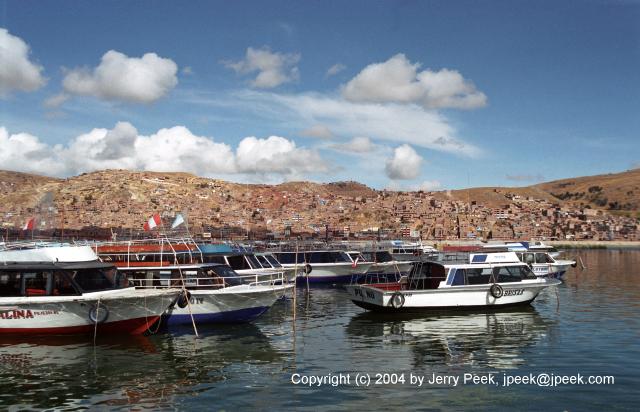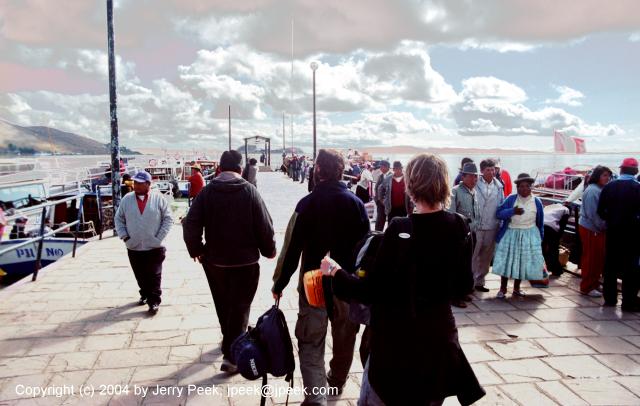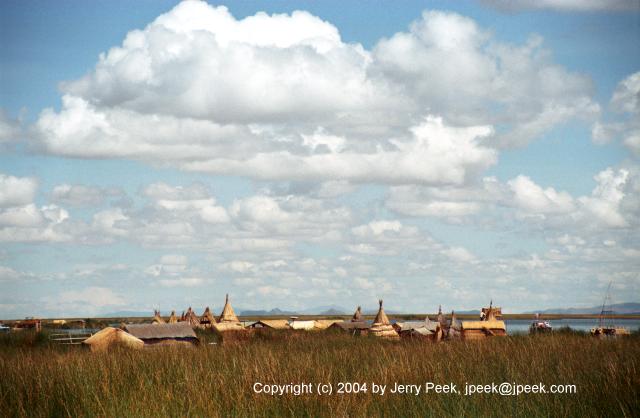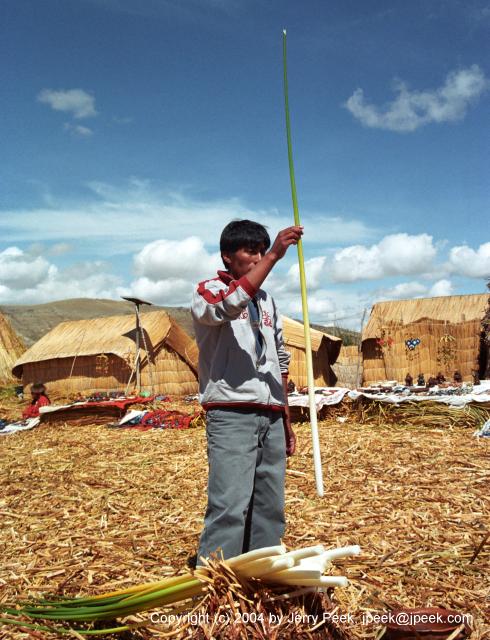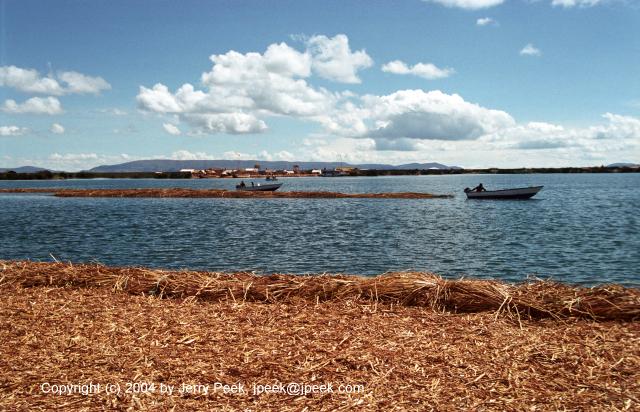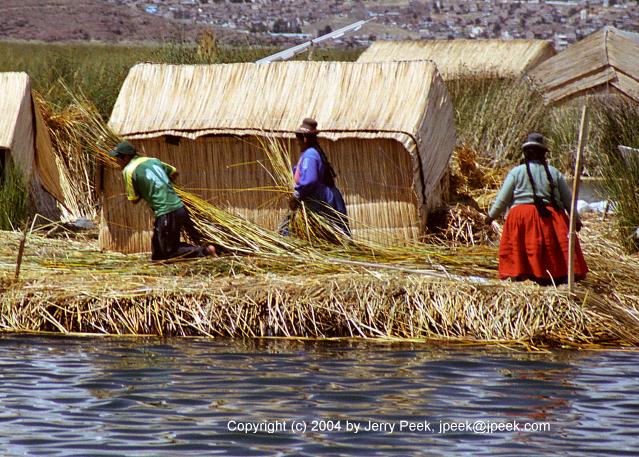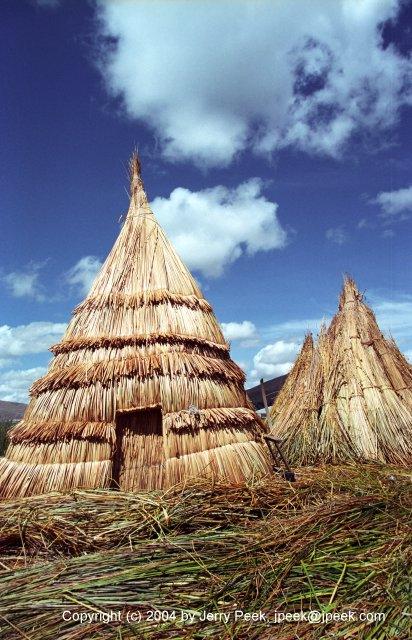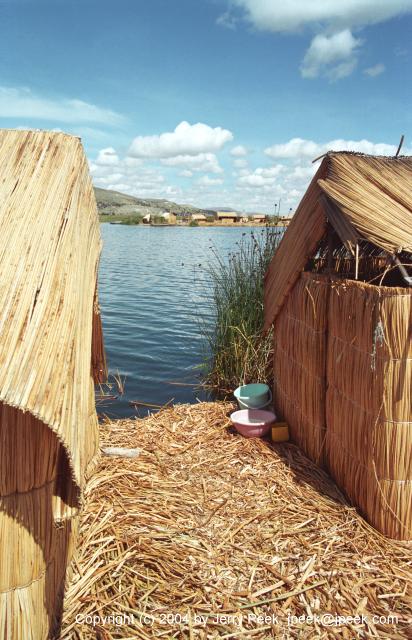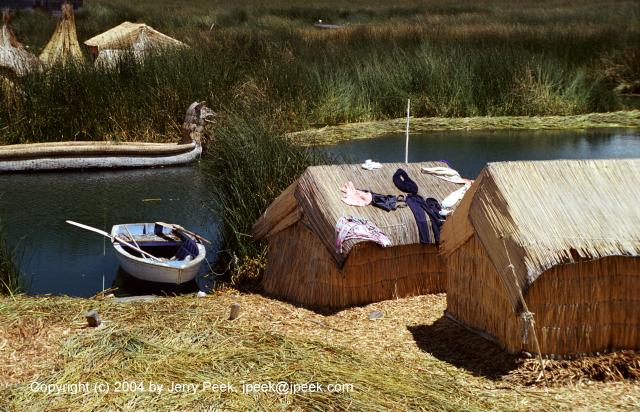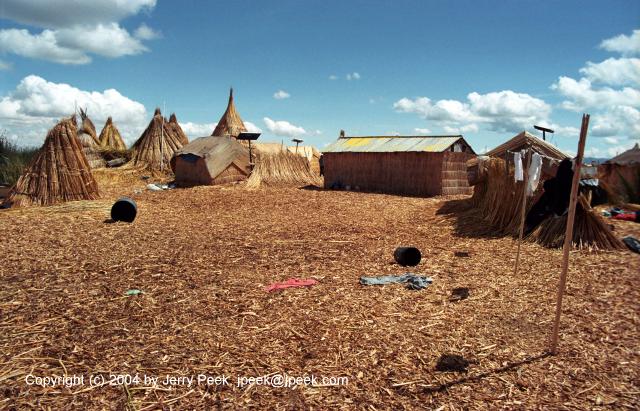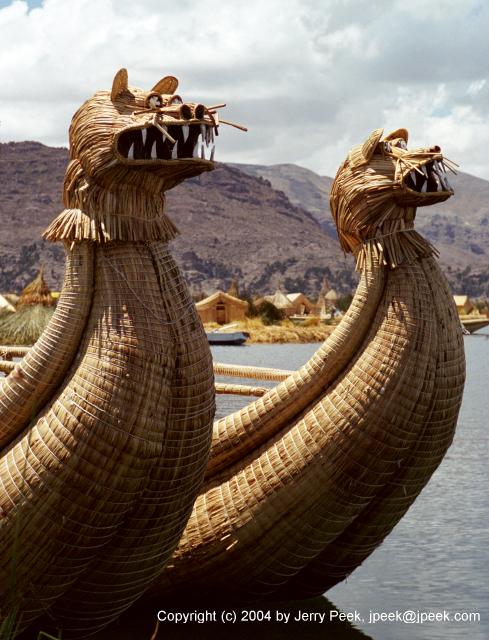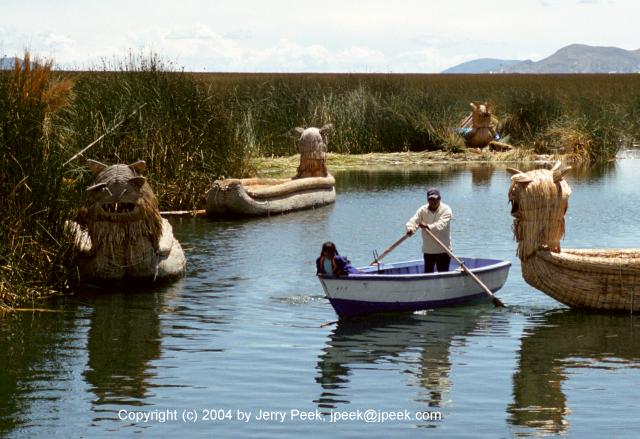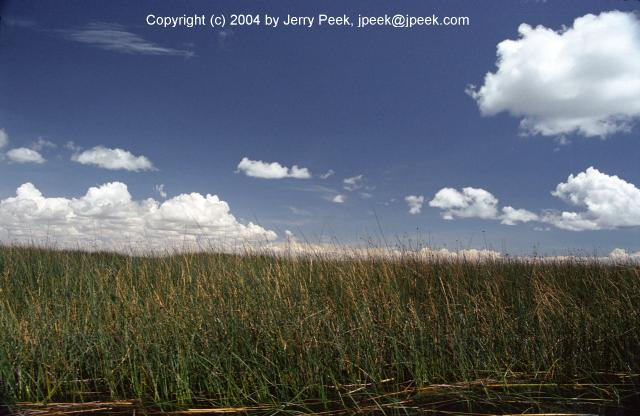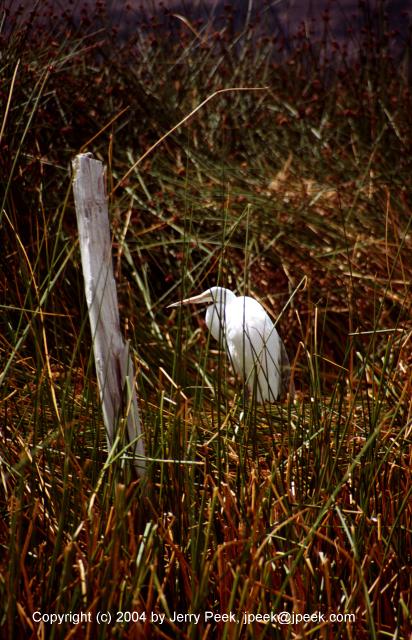
Photo Tour: Lake Titicaca: Uros Islands
Lake Titicaca isn't actually the world's highest lake.
But it's close -- and it's sure the
biggest high-altitude lake.
It's about the size of Lake Tahoe in the USA, but a lot higher.
Half of the lake is in Peru and the other half is in Bolivia.
I visited the northern part.
The lake is impressive enough by itself: deep blue water under
an intensely bright sky, ringed by mountains (especially the snow-capped
peaks on the Bolivian side).
But when you're on the lake, you'll also see peninsulas and islands --
actual islands as well as some unique floating islands made of reeds.
I took a boat trip with a group of about 20 people
to spend the night with families who live on Amantani Island.
On the way to Amantani, we visited a couple of the Uros floating islands.
The next day,
on our way back to Puno, the group walked to the top of Taquile Island,
had lunch, and walked down.
(I didn't take photos on Taquile.)
Several tour operators run this same trip daily, and I think all of the
tour agencies use the same tour operators.
I booked mine through the really helpful people at
All Ways Travel.
To get a larger version of any picture,
click on it; a new window should open. When you close that
window, this window should still be here.
Here are views from the
port toward Puno and while we're walking out to the boat.
I edited the second photo to try to give you a feel of the quality of
the light and the sky, almost blindingly strong and bright:
|
One of the first things you
notice in the lake is that there are a lot of reeds growing near Puno.
These are tortora reeds.
They have a lot of purposes.
One, our guide told us, is to trap the water pollution near Puno and
keep it from drifting out into the rest of the lake.
The reeds are dried and used for all kinds of construction.
They're used as food; the juicy insides tasted to me like salted celery
(it was good!).
And they're used to build the amazing Uros Floating Islands.
These islands were built centuries ago by Uros Indians avoiding the Inca
on the lakeshore.
Now they're mostly tourist attractions; the islanders sell crafts and
hope that visitors will support them by taking some home.
Here's a view of one of the islands and a photo of our guide showing
us about the reeds:
|
The islands quickly rot from
the bottom, so islanders constantly add new reeds to the top.
Below left, hauling cut mats of reeds to the islands by boat;
below right, dragging reeds across one of the islands:
|
We visited two of the islands.
You have to pay attention to where you walk: some parts are squishy and
you can step onto the lake water -- especially near the edges.
It can't be an easy place to live.
These days, at least, villagers don't have to use candles for lighting.
One man told me about the fires they used to have, which could be deadly:
imagine your land burning from underneath you!
Now this island (at least) has solar panels; you can see one of them at
sprouting from a house at the bottom right below.
(Remember that you can click for a larger view.)
|
Boats are an important part
of life here, of course.
We saw the typical boats that you'd find anywhere in the world.
There were also lots of boats made of reeds, and
most of those had an animal figurehead:
|
Reeds, sky, water, birds...
what a place!
|
[Previous page: Around Puno]
[Next page:
Lake Titicaca: Amantani Island]
[Tour start: Panama, Peru and Bolivia]
[Tours]
(These photographs are Copyright © 2004 by Jerry Peek.
Much higher-resolution versions of most images,
and many other images too, are available at
Jerry Peek Photography.
Photos are available at reduced prices, or free, for non-commercial use.)
Contact us

